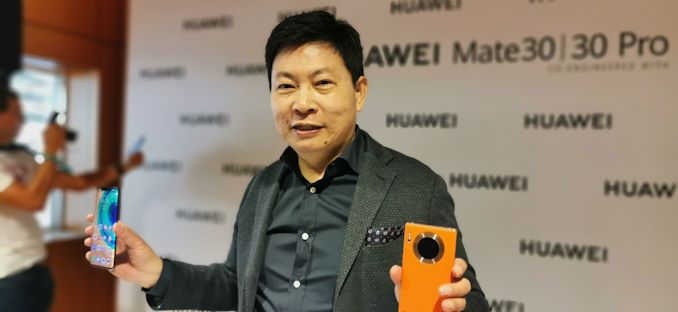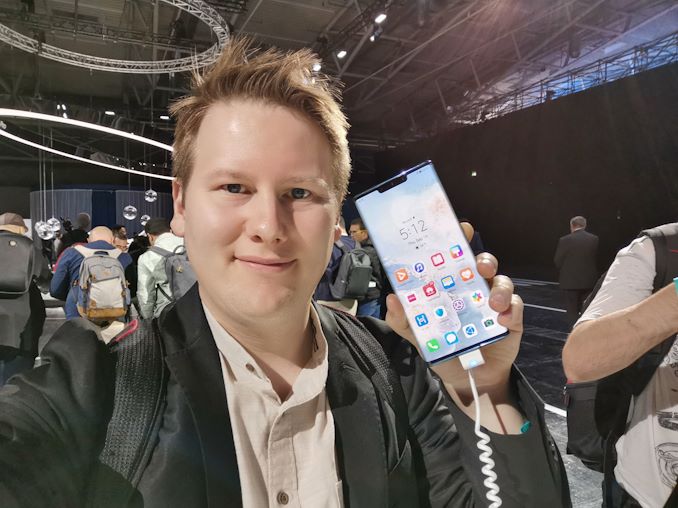A Day with the Huawei Mate 30 Pro: Kirin 990 and 7680 FPS Slow Motion Tests
by Dr. Ian Cutress on September 23, 2019 4:00 AM EST- Posted in
- Smartphones
- Huawei
- Kirin 990
- Mate 30 Pro
- 7680fps
Final Thoughts
The big question on everyone’s lips is whether Huawei can survive without the Play Store, and then in turn, without Google’s main apps like Gmail, YouTube, or Maps.
To address things first, no, Google Play Store cannot be side loaded. It requires Google’s Mobile Services (GMS), which are not enabled on the new Huawei smartphones. Huawei will not give users directions on how to install GMS, however we are expecting them to unlock the boot loader to give users kernel access. Also, Huawei has officially stated that they will not instruct retailers to give directions how to get around it, though retailers are more than welcome to help users get around that issue, but Huawei will not assist.
If the US-China issue is solved, the CEO has stated that they are able to reinstate GMS and Google’s Apps overnight. Until that point, users are directed to Huawei’s own app store (called App Gallery), and other app stores, that contain the most popular applications (Facebook, Instagram, Whatsapp – these apps can be sideloaded from apks anyway). Huawei is putting $1B into enhancing its own app store, to encourage developers to create applications for Huawei.
Until it gets sorted out, Huawei’s recommendations for anyone wanting to use Google Apps is simple: most of the applications can be accessed through the web. Gmail, Photos, Docs, Calendar, Maps, and others all have their own web interfaces, and so users could just create shortcuts on the main screen to these websites. For certain things like Google Fit, or Google Drive, it gets a bit more complex. Unfortunately,
I don’t think that the lack of Google’s apps is the main issue here – it’s the lack of the Play Store. Even though most casual users flip between the same few basic applications, when it comes to things like Evernote, Uber/Lyft, Otter, BBC News, VLC, Dropbox, Airline apps, I’m going to have to side load them all, and there’s no guarantee of continual updates. It’s going to be a pain. Add on top of that, there is no Google Pay, which I’ve started to use frequently.
Could I use the Mate 30 Pro without the Play Store as a daily device? I believe so – I think I could manage for the most part, and for the few items that won’t work, I would have to find alternatives. But ultimately it’s a high bar to entry, and I would have to spend an hour or two with the device making sure I have my primary apps installed from the beginning.
As for the features of the smartphone, I like the display, although aside from removing the side bezels, there isn’t much use for the wrap-around nature. Not having a physical volume key isn’t a problem for me, and my grip on the phone ultimately hasn’t changed much. It would be interesting to have it in a case, given that I almost always use a case, and to see if that affects anything. The display is bright, and the size is good, and the performance seems more than adequate. Assuming the software ecosystem can come into play here, the device handles itself really well.
For the photography, this early sample (non-final software) is a bit hit and miss. The standard photos don’t look as great as my P30 Pro, which might be down to the P in P30 standing for photography. But that slow motion 7680 fps mode on the Mate 30 Pro is great. As long as you have enough light and can time it just right, this smartphone can easily provide a good slow motion camera if you are happy with the 720p resolution.
Huawei is set to launch the Mate 30 Pro in October, starting with China and a few select European countries. Other EU areas will come through Q4. Huawei will make other announcements about the Middle East and Latin America in due course, but has promised to release it there as well. Also upcoming is the 5G version, which is likely to show up further into Q4, at least in China to begin with. The 8 GB/256 GB model will retail for 1099 Euro, with the 5G version having the same specifications for 1199 Euro.
We will have a full proper review of the Kirin 990 chipset and the Mate 30 Pro, including display testing, full benchmarks, and battery life testing, over the next few weeks.













47 Comments
View All Comments
pberger - Monday, September 23, 2019 - link
I'm more impressed with the 76'206 AI-Benchmark score of this phone thanks to the new NPU more than twice more performant than the 980 one.Now how this can be compared to desktop GPU scores? Any link?
designerfx - Monday, September 23, 2019 - link
", the bottom left is a 40MP f/1.6 camera with OIS, and the bottom left is an 8MP f/2.4 telephoto camera and lens, also with OIS."might want to specify which bottom left, apparently - or fix your typo
eastcoast_pete - Monday, September 23, 2019 - link
Thanks Ian! Question: how is the reception and call quality of the phone? While I use my smartphones for all kinds of other things, my smartphone is also my main phone, and I had some otherwise good smartphones fail at being good at that - making phone calls. Any impressions?saru44 - Tuesday, September 24, 2019 - link
I am really upset with the direction the smartphone reviews are going! They have so many advanced tools and benchmarks to test the display, processor etc, but they outright skip the most important aspect of a phone to many people - Telephony. There is nothing in the reviews about call quality, ear piece volume levels/ clarity, network reception quality inside buildings/ poor network coverage areas, microphone quality (how good the person sounds to the caller on the other side), etc.. Just nothing!peevee - Tuesday, September 24, 2019 - link
"This does one of two things. Firstly, it affects how we change the volume, as there is no volume button control. In order to adjust the volume, the user double taps on the edge of the display, and the volume pop-up allows the user to swipe up and down, using a thumb on the edge of the display, to adjust the volume"Meaning that:
1) There is no rim, so placing the phone display down will scratch the glass with a grain of sand etc
2) a case cannot protect the sides of the phone as that would disable volume adjustment function.
3) You cannot adjust volume by feel in your pocket/phone holder without taking it out and turning on the screen first.
Stupid designs are stupid.
s.yu - Tuesday, September 24, 2019 - link
I noted the volume issue at GSMA, I said that if the rumors are true (which they turned out to be), then the volume implementation would be a total gimmick. NEX3 has a highly similar screen yet their volume is pressure based, which is compatible with a case.peevee - Tuesday, September 24, 2019 - link
"At 256x however, the video is also 32 seconds, meaning that the sensor can only record 0.125 seconds of video."Useless. Typical reaction time is over 0.3s. Way more when a person is tired. Nobody can catch the event lasting 0.125s.
Somebody needs to start prosecution for false advertisement.
peevee - Tuesday, September 24, 2019 - link
The resolution in the high-fps video is not 720p either, it looks like 160p. Looks like they "interpolate" not just frames but pixels in the frame. All while advertising high fps and high res. Fraudsters.s.yu - Tuesday, September 24, 2019 - link
Wow I was thinking 360p, 160p is.........I think they read out more than that, but it could be a little harder to test, you'd need something flying by at high speed on basically the same plane as an MTF chart.Or have the MTF chart flying at high speed, which is even harder.
Or have the phone fly by the MTF chart at high speed while keeping a constant plane of focus, which sounds equally as hard as the flying MTF chart.
s.yu - Tuesday, September 24, 2019 - link
...However, one could shoot the same scene with the slo-mo 720p, and with a regular 60fps 720p, and see if there's a notable degradation in resolution. If the degradation approaches what the video looks like downscaled to 360p then upscaled back, then it suggests fraud.